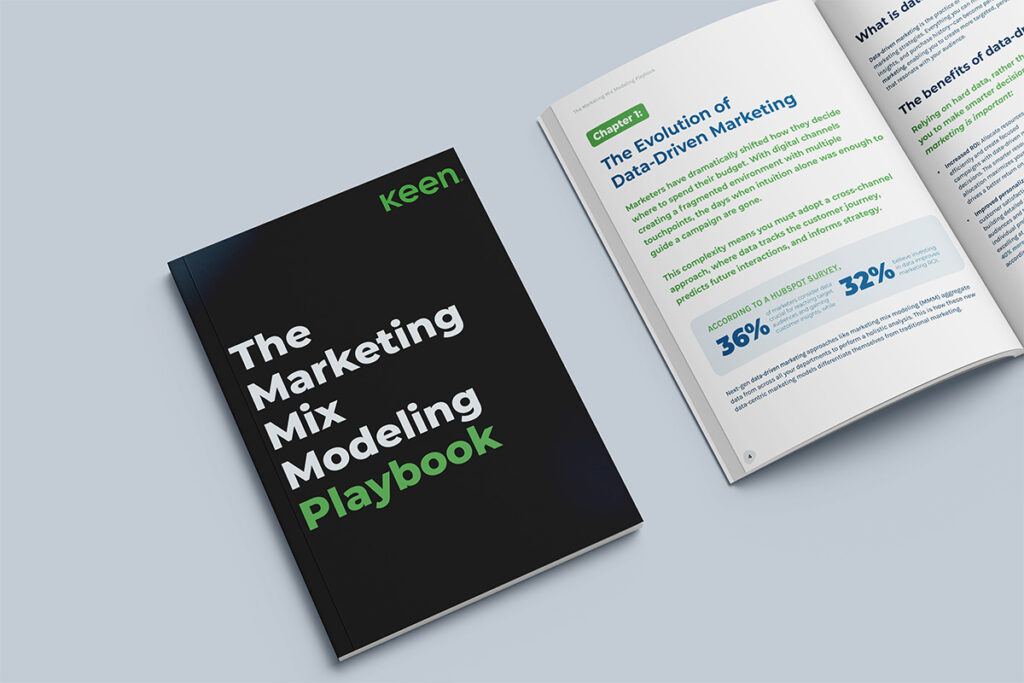Marketing complexity has ushered in the age of the mathematician marketer, meaning analytic skills have never been more necessary. The ability to create and produce a strong and relevant narrative is a large part of success, but so is setting the right foundation to help confidently predict performance and profitability.
In the first installment of our interview series, ReveNew, Keen CEO Greg Dolan sat down with Andy Judd, COO at Laird Superfoods and former CMO at Yasso, to discuss what challenges—and opportunities—he thinks should be top-of-mind for marketers in today’s ever-evolving marketplace.
Here are three big takeaways from the call you don’t want to miss.
Fluidity is key
Staying fluid when you think about your marketing mix is more important than ever—and likely to stay that way for a while. Building flexibility into your infrastructure and teams is fundamental to your success. Because both adaptability and having people that understand the technical mechanics are crucial, you need to create a structure that matches the expertise and make sure you have technicians with a good baseline understanding of platforms.
Meanwhile, from a hard skills perspective, while analytics expertise and capabilities are more necessary than ever in marketing, you still need to pair that with the creative ability to tell a compelling story. So it’s important to ensure your marketing team has a broad and adaptable skill set that can synthesize these components in order to produce optimal results.
No single source of truth exists
Because of the algorithmic advances in the field of marketing, you need to place the best content that’s native to a platform and build it against a campaign architecture that is mathematically or analytically optimized. Today’s market demands that we think more holistically and build a dashboard or platform view that can offer multiple pieces of information and cleaner visibility. Having a clear understanding that no single source of truth exists is paramount here, and a necessary mindset to develop.
It’s important to consider how to bring in human capital, the right digital and analytical infrastructure, and then how to activate that. When thinking about recruiting, you should make sure you are writing the job description for the right capabilities. Candidates need to have some mathematical training and dashboard-level training, as well as media performance marketing level training.
Protect against the grind
Unfortunately, there are still some common traps that marketers can fall into. One of which is the grind of constant fluctuation. While the emerging brand field is often seen as exciting and quick-paced, it can also be very demanding. One way to protect against this is through the building of your company culture, it’s a challenge leadership should take seriously. If your team doesn’t feel grounded or solid, how can it be expected to pivot quickly when necessary and still produce successful results?
Another pain point for brands in this space are resource constraints, whether in terms of dollars or humans. Many brands will try and push all their chips into a certain place, and they don’t start working on incremental vectors of growth soon enough. The best solution for this is to start thinking about what plans need to be activated today–because building the capability set for what the next thing is must be learned and acquired as you afford entry into new spaces.
Putting the puzzle pieces together
IT and marketing have never been more intertwined than they are today. Marketing leaders need to constantly be thinking about the future and how to stimulate avenues of growth without seeing an increase in budget. It’s all about knowing how to optimize against your current go-to market model and thinking about how to utilize resources in the best way to create new opportunities.
That’s one of the things Andy says he loves about Keen—the multi-model approach. For him, having data at different levels, telling a different story, and being able to pull them together on the same playing field to be able to make sense of it is key. And Keen technology does that by taking these potentially conflicting pieces of information and running multiple models to understand optimization both within channels and holistically in order to optimize and guide your next decisions to ensure your making the right ones at the right time.
Keen to learn more? Check out the interview here.





